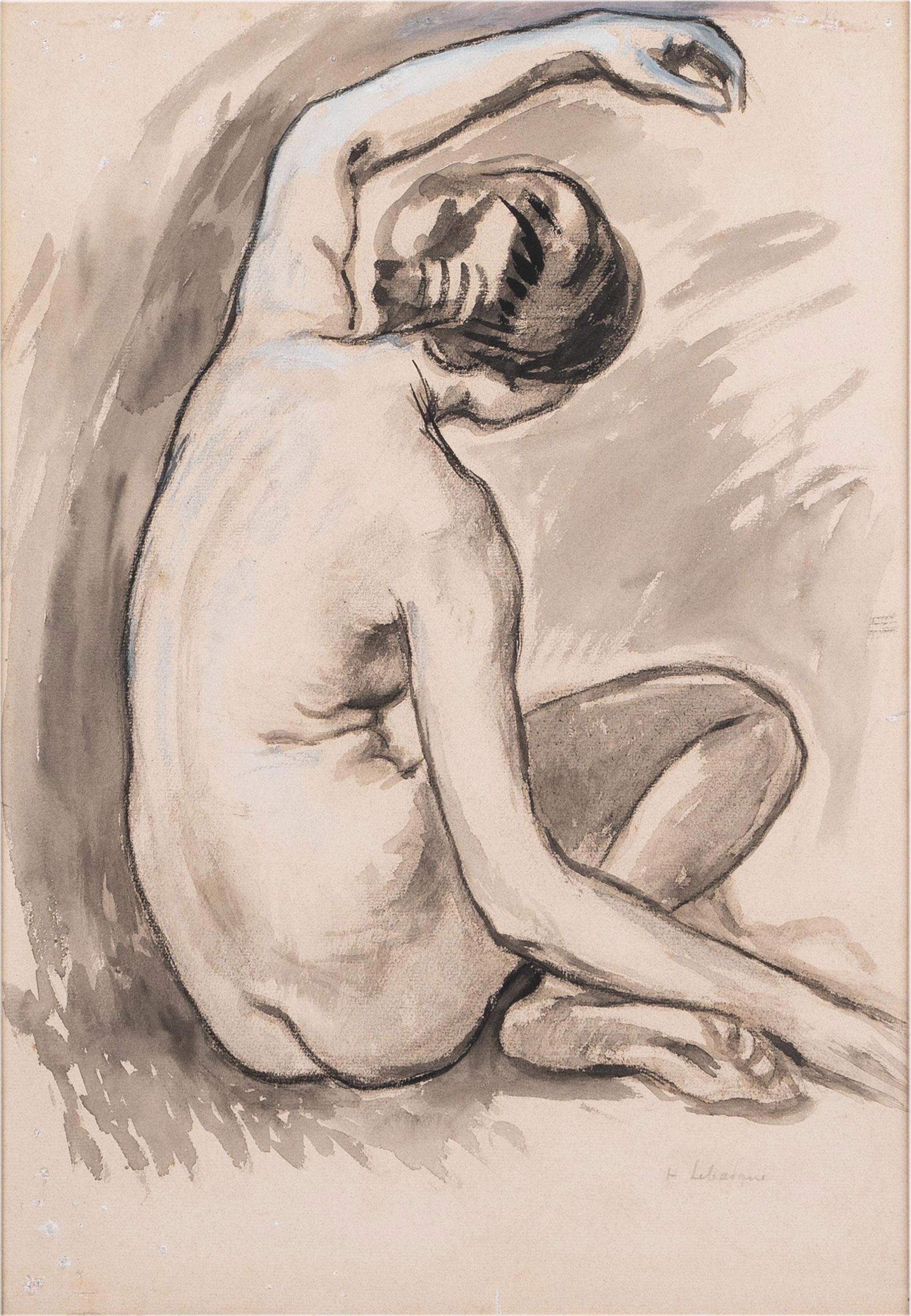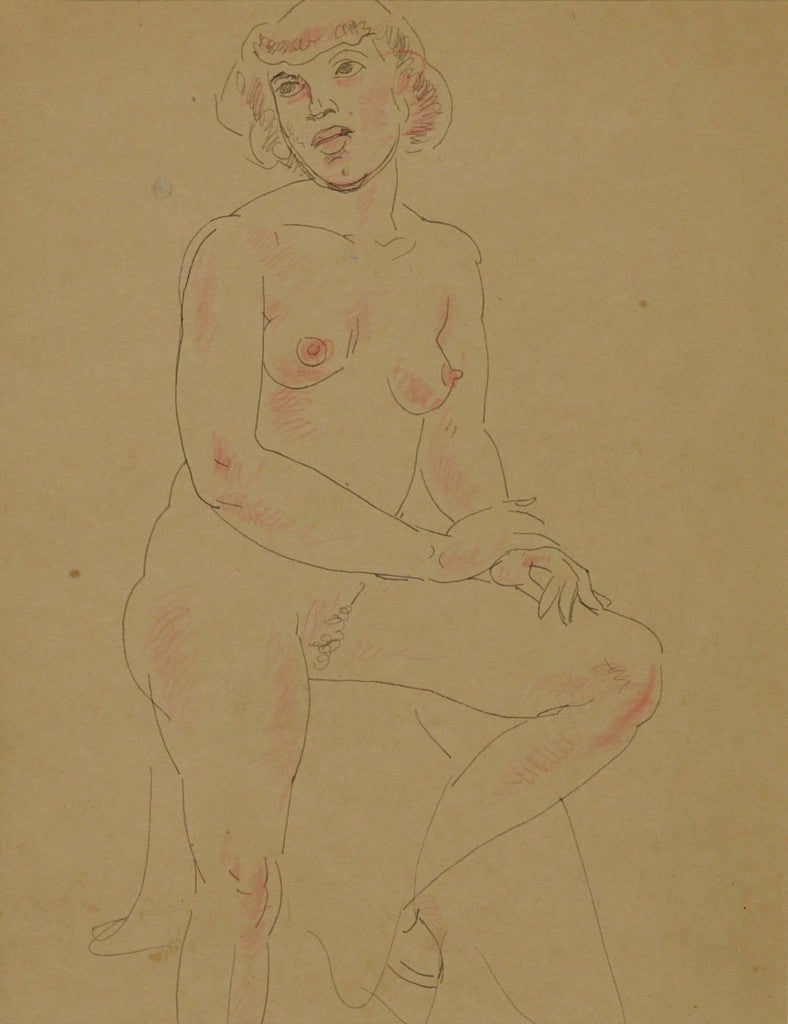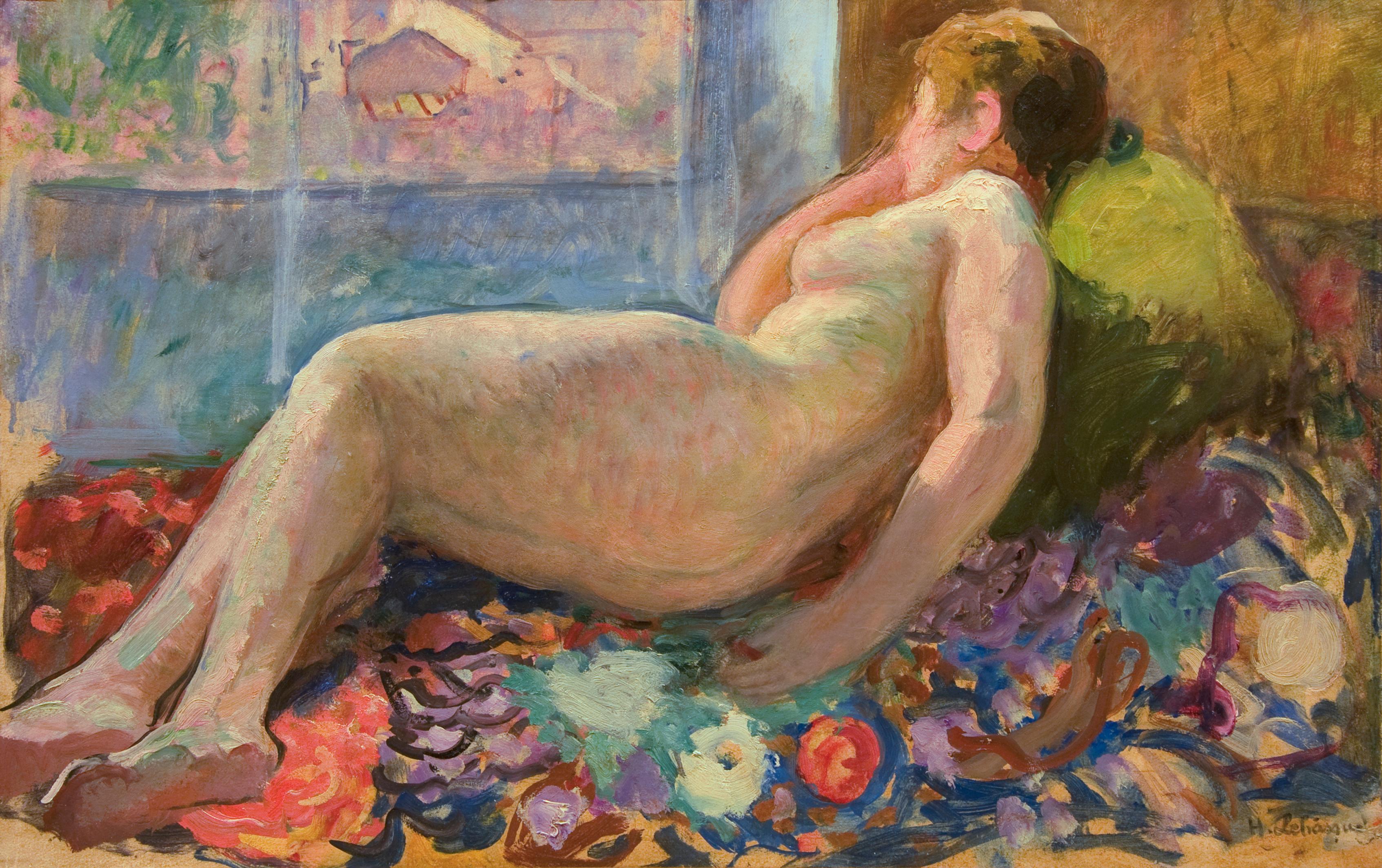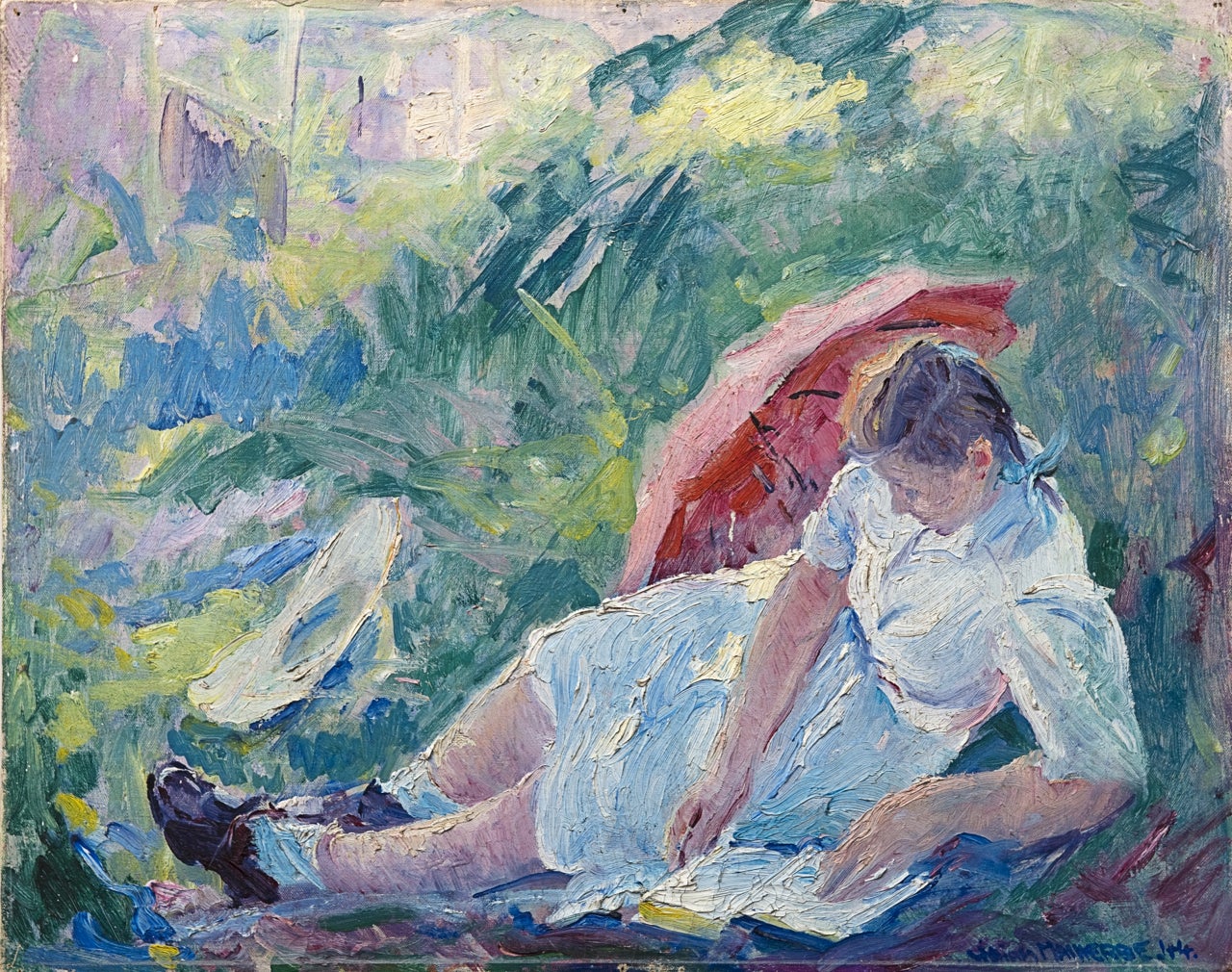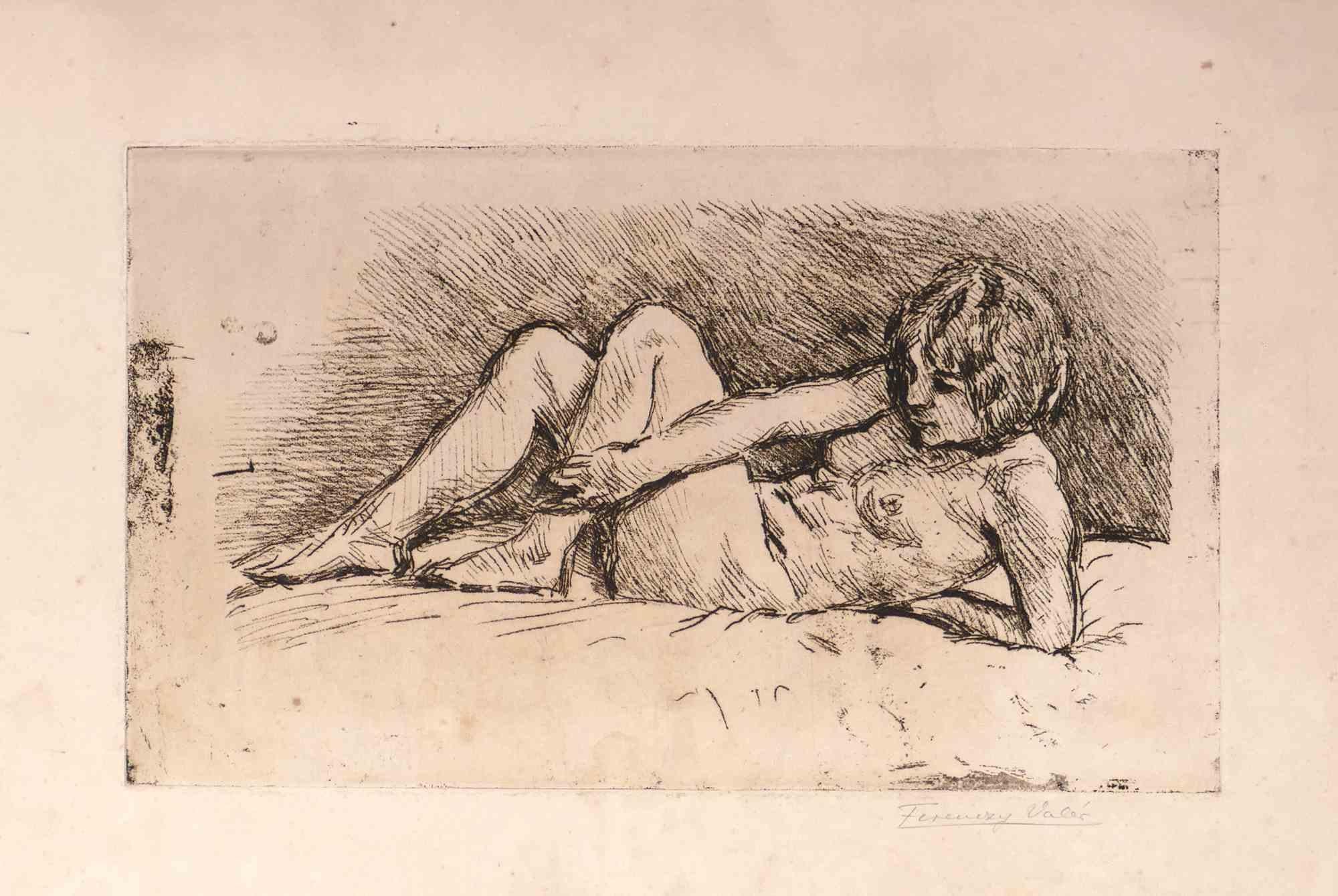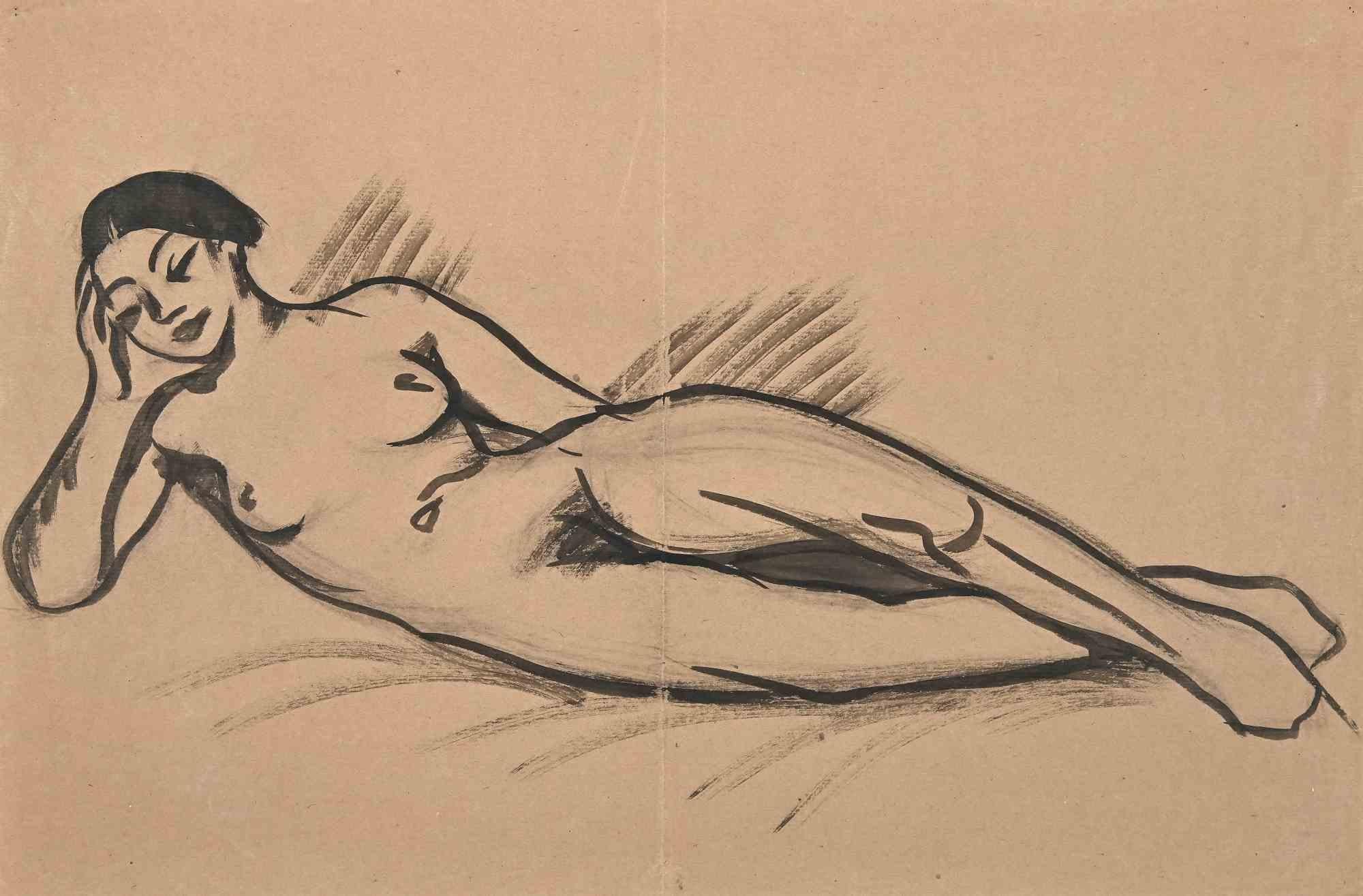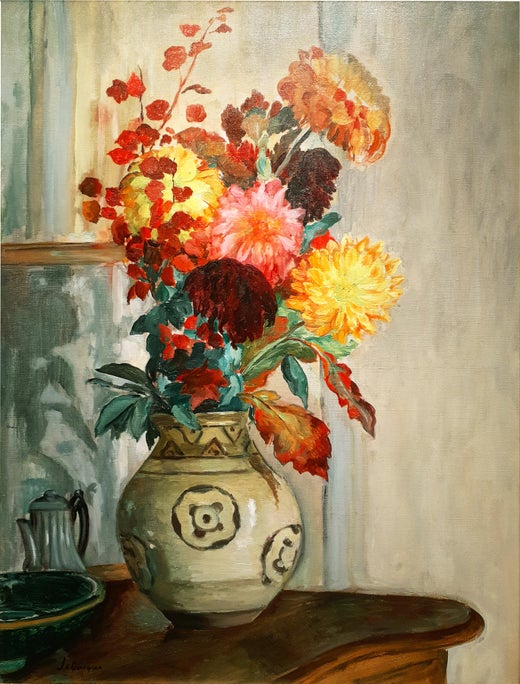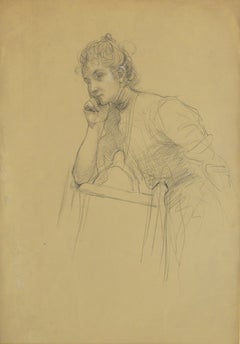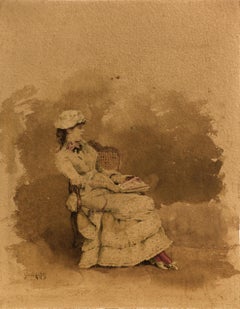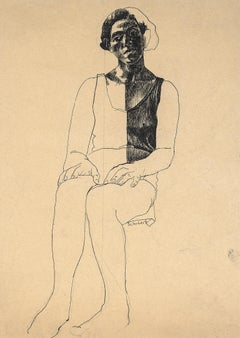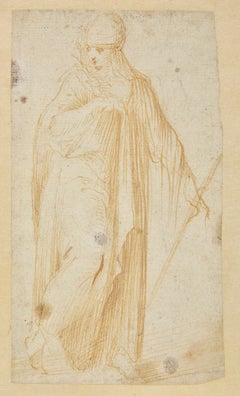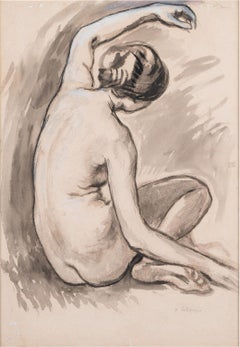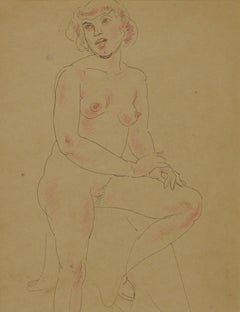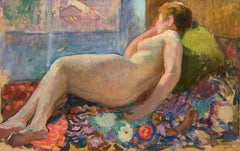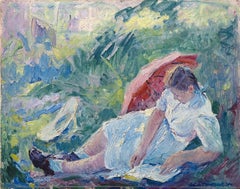Items Similar to Reclining female nudes with an umbrella
Want more images or videos?
Request additional images or videos from the seller
1 of 5
Henri LebasqueReclining female nudes with an umbrellaCirca 1900
Circa 1900
$3,591.62
$5,00030% Off
£2,692.14
£3,822.7730% Off
€3,040
€4,403.0530% Off
CA$4,934.27
CA$7,006.5330% Off
A$5,508.65
A$7,822.1430% Off
CHF 2,886.45
CHF 4,098.6830% Off
MX$67,431.26
MX$95,750.6130% Off
NOK 36,657.93
NOK 52,053.2930% Off
SEK 34,563.77
SEK 49,079.6530% Off
DKK 23,141.59
DKK 32,860.4530% Off
Shipping
Retrieving quote...The 1stDibs Promise:
Authenticity Guarantee,
Money-Back Guarantee,
24-Hour Cancellation
About the Item
HENRI LEBASQUE
(Champigné 1865 - 1937 Le Cannet)
Reclining female nudes with an umbrella
Pencil, stumping and heightened with watercolor
27 x 24 cm
Stamp lower right « H. Lebasque »
Provenance:
Private collection, France
In the later period of Henri Lebasque's career, his focus on female nudes became more pronounced, and his style evolved to embody a sense of tranquility, warmth, and sensuality. By the 1920s and 1930s, Lebasque had solidified his reputation as a master of light, color, and intimate scenes, with female nudes being one of his most frequent subjects. During this time, his work became more centered on the human figure, particularly the female form, and was characterized by a further softening of his palette and technique.
Indeed, settling in Le Cannet, a town just to the north of Cannes, Lebasque continued painting landscapes and domestic scenes, but increasingly focused on the depiction of female nudes. Influenced by his friend and neighbor Henri Matisse, with whom Lebasque had founded the Salon d’Automne in Paris in 1903, he developed a penchant for the depiction of lavish patterning and female nudes.
While his earlier works featured a certain lightness and spontaneity, Lebasque's later nudes took on a more sensual, intimate quality. His depictions of the female body became more refined, with a heightened focus on soft textures. The present Reclining female nudes with an umbrella captures the essence of post-Impressionist sensibilities, where the emphasis is on conveying a mood or atmosphere rather than strict realism. In his drawings of female nudes, this translates into a celebration of softness, tranquility, and the inherent beauty of the female form.
In his pencil drawings, Lebasque was known for his delicate and fluid lines. He often used soft, flowing strokes to define the contours of the female figure, emphasizing curves and the natural grace of the body. His line-work tends to be light and lyrical, avoiding harshness, which contributes to a sense of intimacy in his nudes.
Even in his pencil work, the artist demonstrated an interest in how light interacts with the female form. His drawings, while not heavily shaded, suggest volume and form through the careful placement of lines and minimal shading, creating a sense of depth, the stumping, and three-dimensionality.
When working with watercolor, Lebasque used soft washes of color to complement the delicate lines of his pencil work. His watercolors often have a translucent quality, with light tones of pinks, blues, and yellows used to enhance the natural beauty of the female figure. These color washes give his figures a luminous quality, capturing the play of light. Here the artist heightened the umbrellas with a light red tone. He combined pencil and watercolor in this study of female nudes, where he would sketch the figure in pencil and then add subtle washes of color. This technique allowed him to maintain the precise, elegant line-work of the pencil while giving his figures the added dimension of color and softness. These two reclining female figures, drawn in pencil or with light washes of watercolor, are Lebasque’s signature subjects. The pencil work emphasizes the soft curves of the body, with delicate, flowing lines defining both figures.
There are stylistic comparisons to be made between the present Reclining female nudes with an umbrella and Lebasque’s drawing: Bather on the beach with an umbrella, 14 x 10 cm, Drouot Paris, Me Claude Robert, 10 May 1983, lot 32.
His drawings are distinguished by their natural, unposed quality. The women appear at ease, often in moments of privacy or introspection. This naturalism, combined with the lightness of his pencil strokes and gentle washes of watercolor, creates a feeling of intimacy and tranquility. Lebasque’s drawings of female nudes share similarities with contemporaries such as Pierre Bonnard and Édouard Vuillard, particularly in the intimate, domestic settings and the use of soft, luminous color. However, his approach to the female nude is often more straightforward and naturalistic, focusing on the simple beauty of form and light, rather than the more decorative or stylized approaches of Bonnard or Vuillard.
Louis Vauxcelles, one of the most influential French art critics of the early 20th century, who gave his name to Fauvism and later to Cubism, said of Lebasque's nudes: « Les nus féminins de Lebasque sont un enchantement irisé. Il semble contradictoire dans les termes d’écrire qu’ils sont ensemble chastes et voluptueux; c’est pourtant leur meilleure définition. »
Hailed by critics and artists alike as « the painter of the good life », Henri Lebasque was acclaimed for his individuality, his delicate sense of light, and his personal charm. Born in Champigné, the son of a wood merchant, he went to Paris in 1885 and studied at the École des Beaux-Arts. He then entered the atelier of the portraitist Léon Bonnat and began to exhibit at the annual art society exhibitions and the Paris Salons. He later assisted Ferdinand Humbert with the decorative murals of the Panthéon.
Lebasque’s vision was colored by his contact with younger painters, especially Vuillard and Bonnard, founders of the Nabis, a group of intimist painters who favored the calm and quietude of domestic subject matter. From his acquaintance with Seurat and Signac, Lebasque learned the significance of color theory, which stressed the use of complementary colors in shading. He was a founding member of the Salon d’Automne in 1903 with his friend Matisse. Two years later, a group of artists exhibited there including Rouault, Derain, Vuillard, Manguin, and Matisse. Dubbed Les Fauves for their stylistic « savagery », it was noted by the critic Vauxcelles that Lebasque’s talent arrived « in the midst of the roaring of the unchained beast ». Like Les Fauves, he adopted a similar flatness of shape and color but blended it with a sophisticated and subtle fluidity. He painted domestic scenes with his family as models, landscapes, portraits, and nudes.
From 1900 to 1906, Lebasque lived partly at Lagny on the Marne, but also visited Paris, London, and Venice. He was enchanted by the light of the Midi on a trip to St Tropez in 1906 and spent many summers in the south of France. He exhibited in America from 1916 and was represented by Galerie Georges Petit from 1918. In 1924 he moved to Le Cannet on the French Riviera, where he shared a model with his friend and neighbor Bonnard.
Lebasque had some commercial success during his lifetime. He worked on the decorations at the Théâtre des Champs-Élysées and of the Transatlantique sealiner.
The work of Henri Lebasque is represented in the Musée d’Orsay; the Fine Arts Museums of San Francisco; the Fogg Art Museum, Harvard University, Cambridge…
Henri Lebasque created here an exquisite drawing of female nudes in pencil and watercolor, focusing on the grace of the female form and its interaction with natural light and relaxed, everyday settings. While specific pieces from his draughtsmanship might not be as famous as his paintings, this work reflects the same sensitivity and intimate style that characterized his overall oeuvre.
- Creator:Henri Lebasque (1865-1937, French)
- Creation Year:Circa 1900
- Dimensions:Height: 10.63 in (27 cm)Width: 9.45 in (24 cm)
- Medium:
- Movement & Style:
- Period:
- Condition:
- Gallery Location:Paris, FR
- Reference Number:1stDibs: LU2258215449292
Henri Lebasque
Henri Lebasque (25 September 1865 – 7 August 1937) was a French post-impressionist painter. He was born at Champigné (Maine-et-Loire). Lebasque was a founding member of the Salon d'Automne in 1903 with his friend Henri Matisse. Two years later, a group of artists exhibited there including Georges Rouault, André Derain, Édouard Vuillard, and Matisse. Lebasque also became friends with artists such as Gustave Rouault, Raoul Dufy, Louis Valtat, and Henri Manguin, the last of whom introduced Lebasque to the South of France. His time in South of France would lead to a radical transformation in Lebasque’s paintings, changing his colour palette forever. Other travels included the Vendée, Normandy, and Brittany. His work is represented in French museums, notably Angers, Geneva (Petit Palais), Lille (Musée des Beaux-Arts), Nantes, and Paris (Musée d’Orsay). Lebasque died at Cannet, Alpes Maritimes in 1937.
About the Seller
No Reviews Yet
Vetted Professional Seller
Every seller passes strict standards for authenticity and reliability
Established in 2010
1stDibs seller since 2022
- ShippingRetrieving quote...Shipping from: Paris, France
- Return Policy
Authenticity Guarantee
In the unlikely event there’s an issue with an item’s authenticity, contact us within 1 year for a full refund. DetailsMoney-Back Guarantee
If your item is not as described, is damaged in transit, or does not arrive, contact us within 7 days for a full refund. Details24-Hour Cancellation
You have a 24-hour grace period in which to reconsider your purchase, with no questions asked.Vetted Professional Sellers
Our world-class sellers must adhere to strict standards for service and quality, maintaining the integrity of our listings.Price-Match Guarantee
If you find that a seller listed the same item for a lower price elsewhere, we’ll match it.Trusted Global Delivery
Our best-in-class carrier network provides specialized shipping options worldwide, including custom delivery.More From This Seller
View AllPensive Young Woman
By Maurice Chabas
Located in Paris, Île-de-France
Maurice Chabas (Nantes 1862 – Versailles 1947)
Pensive Young Woman
Graphite with white-chalk highlights on blue-grey paper
46 × 32 cm
Unsigned
Provenance
Bruno Delarue Gallery, É...
Category
1890s Impressionist Portrait Drawings and Watercolors
Materials
Pencil, Chalk
Elegant Lady with a Fan
Located in Paris, Île-de-France
Gérald Laffitte (19th–20th century)
Elegant Lady with a Fan
Watercolor on paper,
28 x 22 cm
Provenance:
Private collection
Little is known about the life and career of Gérald Laff...
Category
Late 19th Century Impressionist Portrait Drawings and Watercolors
Materials
Watercolor
Seated Woman
Located in Paris, Île-de-France
Created at the height of the Munka (“Work”) circle’s activity, Seated Woman marks a critical moment in Ernő Schubert’s artistic trajectory—from the immediacy of expressionism to the ...
Category
1920s Nude Drawings and Watercolors
Materials
Ink, Magazine Paper
Draped Woman Holding A Branch
Located in Paris, Île-de-France
CARLO URBINO
(Crema 1525 - after 1585)
Draped Woman Holding a Branch
Pencil and brown ink on laid paper
13.6 x 7.7 cm
Unsigned
16th century
Mounted on 20th-century paper
Handwrit...
Category
16th Century Old Masters Figurative Drawings and Watercolors
Materials
Ink
Young Girls Reading
Located in Paris, Île-de-France
Georges Barat-Levraux (1878–1964)
Young Girls Reading
Pastel on paper, 39 x 31 cm
Provenance: Private collection
In this tender and intimate scene, Georges Barat-Levraux captures a ...
Category
Early 20th Century Post-Impressionist Interior Drawings and Watercolors
Materials
Pastel
Study of Feet and a Figure Sketch
Located in Paris, Île-de-France
Attributed to Jacob JORDAENS (Antwerp 1593–1678)
Study of Feet and a Figure Sketch
Red and black chalk on laid paper
25.9 × 18.4 cm (10¼ × 7¼ in.)
Unsigned
Minor losses, folds, an...
Category
17th Century Old Masters Nude Drawings and Watercolors
Materials
Chalk
You May Also Like
Femme assise nue avec un bras levé au-dessus de sa tête Seated female nude ...
By Henri Lebasque
Located in Fairlawn, OH
Femme assise nue avec un bras levé au-dessus de sa tête
Seated female nude with an arm raised over her head
Ink and watercolor on paper, n.d.
Signed in pencil lower right (see photo)...
Category
1930s French School Nude Drawings and Watercolors
Materials
Watercolor
Untitled Nude (Double sided ink drawing with colored chalk)
By Henri Lebasque
Located in Fairlawn, OH
Female Nude (Double-sided drawing)
Recto: Reclining Nude
Verso: Seated Nude
Signed in pencil lower right, recto (see photo)
Pen and ink with colored chalk, c. 1925
Condition: Repaire...
Category
1920s French School Drawings and Watercolor Paintings
Materials
Ink
Nu sur un divan
By Henri Lebasque
Located in Mc Lean, VA
Literature:
Bazetoux, Henri Lebasque Catalogue Raisonne (Neuilly, 2008), vol. 1, p. 223 (no. 820) (illus)
Category
1920s Post-Impressionist Figurative Paintings
Materials
Canvas, Oil
"Reclining Girl with Parasol"
By William Malherbe
Located in Southampton, NY
Signed lower right dated 1944
Signed verso William Malherbe "The Thetford Hill Vermont"
Provenance: Palm Beach Galleries
Framed in a gold frame
Category
1940s Post-Impressionist Paintings
Materials
Oil, Board
$6,000 Sale Price
20% Off
Reclined Nude - Etching by Valér Ferenczy - 1930s
Located in Roma, IT
Reclined Nude is an etching and drypoint on ivory-colored paper realized by Valér Ferenczy in the 1930s.
Hand-signed by pencil on the lower right.
Good conditions with foxing and ...
Category
1930s Modern Figurative Prints
Materials
Etching
Reclined Nude - Drawing by Jean Delpech - Mid 20th century
By Jean Delpech
Located in Roma, IT
Reclined Nude is a drawing in watercolor realized in the Mid-20th Century by Jean Delpech (1916-1988).
Good conditions except for folding.
The artwork is realized in deft strokes ...
Category
Mid-20th Century Modern Figurative Drawings and Watercolors
Materials
Paper, Watercolor
$359 Sale Price
20% Off
More Ways To Browse
Nude Female Art Models
French Female Nude
Female Nude French Painting
Umbrella Paintings
Red Line Drawings
Painting Of Umbrellas
Line Drawing Of Women
Impressionist Female Nude
Cubism Nude
Pierre Bonnard Drawing
George Post Watercolor Paintings
George Post Watercolor
Curves Nude
Paintings Of Nudes On A Beach
Le Fauves
Recliner 19th Century
Umbrella On Beach
Robert Wood Watercolor
